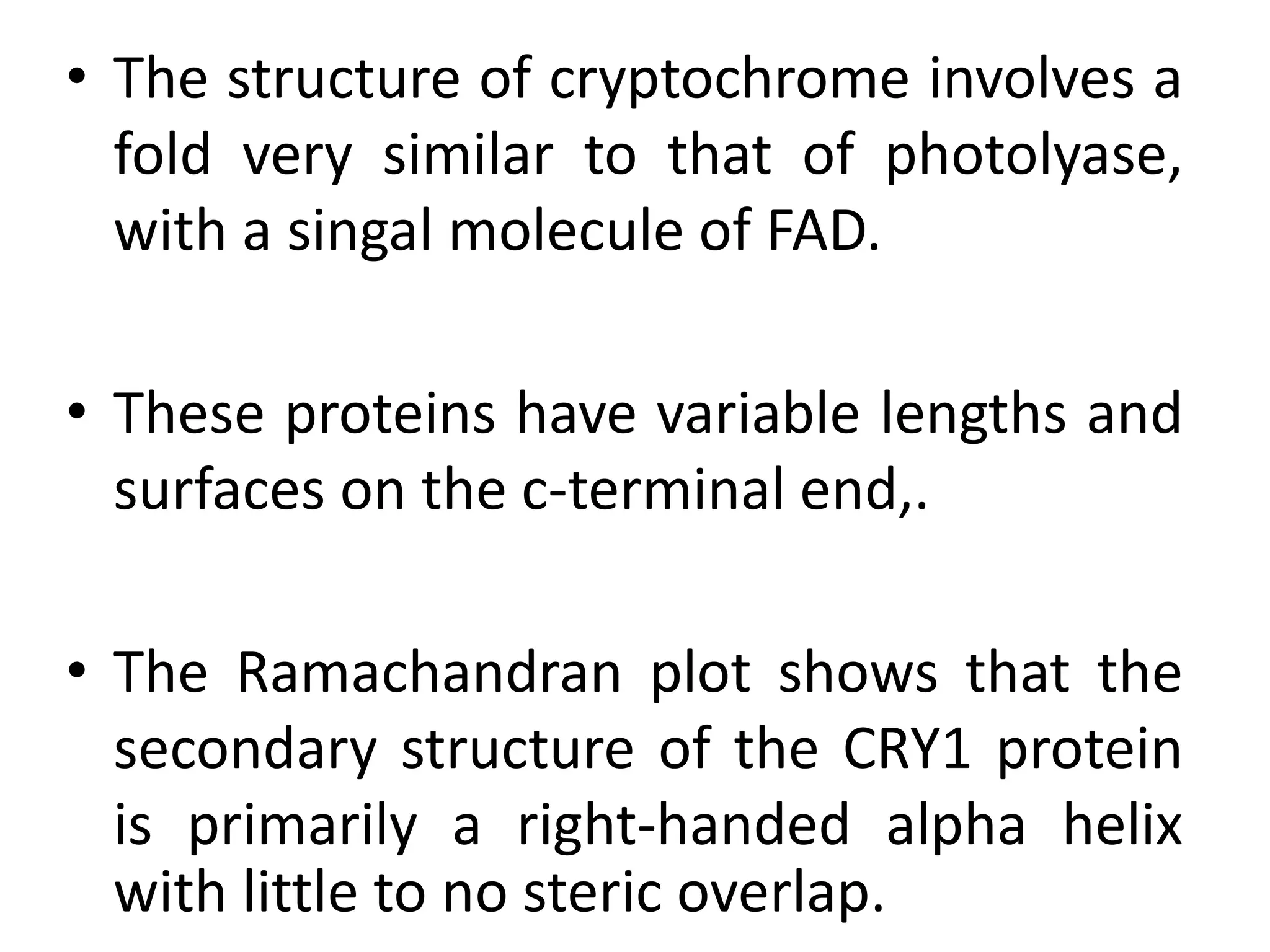Phytochrome and cryptochrome are light-sensitive plant pigments. Phytochrome exists in two forms (Pr and Pfr) and regulates flowering, seed germination, and other responses based on the length of day and night. It was discovered in the 1940s-1960s and is involved in circadian rhythms. Cryptochrome was identified in the 1990s as a blue light photoreceptor involved in circadian clocks. Both pigments consist of protein subunits that bind a chromophore, undergo light-driven changes in conformation, and play key roles in photomorphogenesis and photoperiodism in plants.





































